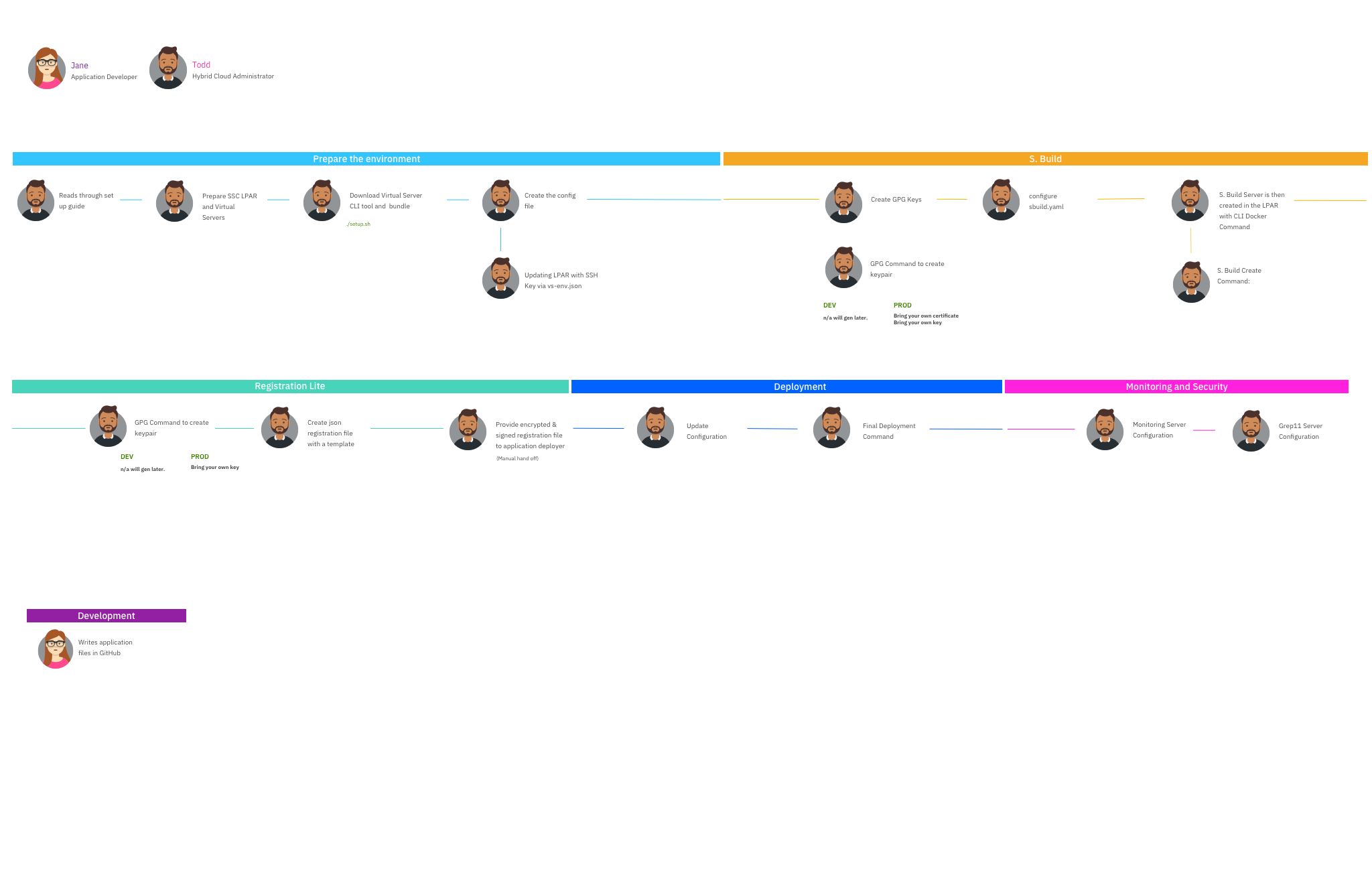Command Line Interface Redesign
This case study highlights how design doesn't just impact our users but can also improve the ways that the business functions.
⚠️ This project contains NDA-sensitive information, and some information has been redacted or modified to comply. This does not affect the process, story, or outcomes. Thanks for understanding!
Background and User Research
Our design team (myself as the UX Designer, a design lead and a researcher) was staffed to support a LinuxONE based product offering that enables clients to create highly secure virtual servers to protect a their applications and data from insider and outsider threats.
Prior to Q12019, this product offering was built and designed by developers -- no traditional design input or user research done whatsoever. Through doing generative user research interviews, my researcher found that after the product was released in Q4, none of our clients wanted to use the product because it failed all of their expectations and was impossible to use. The business leaders could not understand why it failed user expectations because they delivered the product out the door on time. That's the problem. The business was the focused on their needs and not the users.
“I want to use your product and its functionality but I will not adopt it until the user experience is good. I will wait for a good user experience in 2Q next year over getting it 4Q this year.”
THE PROBLEM
How do we design a delightful and valuable user experience for our clients so that they will change their perception of the product offering.
UX Process
Low-fi user flow
I met weekly with the lead developer to intricately map out in Mural the steps a user would need to take to deploy their first virtual server. At each step, we outlined the line of code a user would have to input to move forward in the process, which ultimately mapped out the As-Is user journey.
Our user researcher uncovered that users thought the getting started process was overwhelming and very complex. I prioritized the getting started process as my first design task to tackle.
Hi-fi user flow
After multiple iterations on the low-fi user flow, I mapped out a hi-fi version that aligned with our personas needs to visually illustrate how complex the process really was.
I presented this hi-fi user flow to our sponsor users to get their feedback and have them pinpoint the steps where they had pain points.
Designing a To-Be experience
After identifying user pain points, I started to design for the To-Be user experience. Since I don't have a developer background, I proposed simplified and shortened commands to my development team that would be easier for users to remember rather than long string of code.
I worked closely with the development team to talk through back-end constraints and co-creating scripts to automate a lot of the workings behind the covers to simplify things for the user
I simplified and automated the first 6 steps of the As-Is journey down to a single command to get users up and running faster. The overall process went from 31 steps to only 16.
Usability + Evaluative Research
Once development was able to build and automate the simplified commands, we were able to demo the new To-Be user experience to our sponsor users. We virtually conducted our user interviews with our sponsor users to present the simplified end to end experience. Our users were excited about the new user experience and expressed that wanted to move forward with the product.
“I think you’ve made a 100% improvement. So far what I’ve seen is very impressive. You guys have really streamlined this and made it a lot simpler than it was originally, 5/5 [would use this].”
“This looks greatly simplified and I think it seems like a very good improvement”
Outcome
We as a design team won the 2Q2020 IBM Systems Impact Award, which is an internal corporate award to showcase exemplary teamwork and projects that had high impact to the business and our clients.
Our team drove change from the bottom up to impact our overall corporate organization as well.
“We are going to do things the right way going forward. Look at these results. No shortcuts anymore.”



